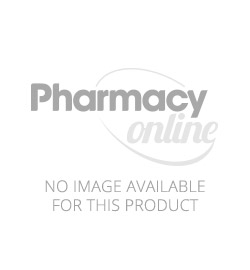If there is a Poo-smell complaint after the nappies have
been washed, this is an issue that needs to be addressed in the same way as the
Ammonia/Wee-smell issues covered in the previous post, with the introduction of a few
additional tools. Poo-smells are bacteria based smells (Wee is sterile and
doesn’t contain bacteria, whereas poo is riddled with it!). Extra chemicals
need to be introduced into the strip wash method to ensure that the bacteria
which has setup a breeding ground there can be killed.
Unfortunatly, we haven’t yet been able to determine that hot
water alone kills this bacteria as the hot water used in wash cycles is rarely
at boiling point, and if it is, it isn’t there long enough to ensure that the
bacteria will all be killed. These sorts of temperatures also are not good for
the nappy fibres or the elastics in the covers of the nappies and will lead to
elastics stretching out and the fibres in the nappy inserts “loosening” and the
nappy inserts thinning faster.
We suggest the following wash tools to help kill the
bacteria.
 1.
Detol – This
anti-bacterial and anti-fungal antiseptic liquid is a cheap and readily
available liquid that rinses clean out of nappies. It is also a good addition
to wash cycles when babies have had viruses as it’s germ killing capabilities
can take down viruses too which may spread through faeces. This goes for things
such as Hand, Foot and Mouth disease which are highly contagious through
faeces. Simply add 1 cup to the last wash cycle in the strip wash process so
that it isn’t having to fought through any solids or build up on the nappies so
that it can do it’s job of killing the bacteria!
1.
Detol – This
anti-bacterial and anti-fungal antiseptic liquid is a cheap and readily
available liquid that rinses clean out of nappies. It is also a good addition
to wash cycles when babies have had viruses as it’s germ killing capabilities
can take down viruses too which may spread through faeces. This goes for things
such as Hand, Foot and Mouth disease which are highly contagious through
faeces. Simply add 1 cup to the last wash cycle in the strip wash process so
that it isn’t having to fought through any solids or build up on the nappies so
that it can do it’s job of killing the bacteria!
2.
Canesten Hygiene Rinse – This is another option
which can be used instead of Dettol. It is slightly more expensive but is
specifically designed for in-laundry uses. It can break the cycle of
re-infection and cross infection (Both of the child and the nappies
themselves!) by helping to eliminate fungal spores that can remain in your
clean washing increasing the risk of re-infection. Canesten Hygiene Rinse can
be used in cold or hot wash. The downside of this product is that it is not as
readily available as Detol and can usually only be purchased through a chemist.
The advantage that it has though is that if your baby is suffering from thrush,
this will help break the cycle of the nappy rash part of it faster than the Dettol.
 3. 100% Eucalyptus
oil – While we encourage the use to water soluble eucalyptus and tea tree oils
in our regular strip wash, sometimes the use of 100% Eucalyptus oil is
warranted if issues with Detol and Canestan exist for your child or family.
Adding 2 caps to the final was cycle of a strip wash process will ensure that
the bacteria and fungai are killed and the nappies will be given a great fresh
smell. Brands like Bosito are readily available through Coles, Woolworths and
IGA.
3. 100% Eucalyptus
oil – While we encourage the use to water soluble eucalyptus and tea tree oils
in our regular strip wash, sometimes the use of 100% Eucalyptus oil is
warranted if issues with Detol and Canestan exist for your child or family.
Adding 2 caps to the final was cycle of a strip wash process will ensure that
the bacteria and fungai are killed and the nappies will be given a great fresh
smell. Brands like Bosito are readily available through Coles, Woolworths and
IGA.
If after the addition of one of these products, the poo
smell still exists, and a full strip wash has been performed beforehand,
examination will need to be made of your water source and the cleanliness of
your washing machine.
